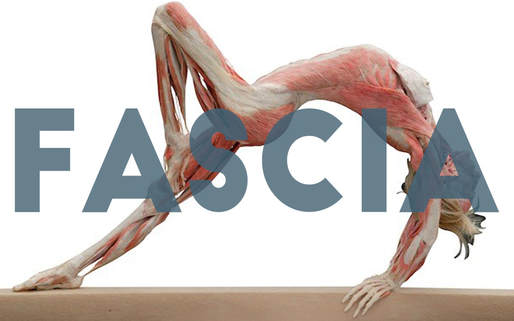 Fascia, it has been a buzz word in the health and fitness industry for the past 10 years, everyone seems to have a technique or device that will condition, stretch, manipulate or whatever this thing is called fascia. But what really is fascia? Over the next few blogs I want to try to explain and help you understand the ins and outs of this newest trend. By the end of this series you will understand of what fascia is and, more importantly, what it is not; what it does, and what it does not do. My desire is for you to have enough of an understanding that you can confidently wade through the truth and lies of what you are being asked to do or purchase. Let’s start with the science: Fascia is the second largest connective tissue in your body, number 1 is blood. Yep, it is that prevalent. It actually comes in a variety of forms and has a few different functions. At the deepest it is the visceral lining found around your organs like your heart, lungs, stomach, uterus…it keeps things lubricated. Next, we have the structure. Have you ever skinned a chicken breast, noticed that really thin film between the skin and ‘meat’? …that’s fascia. Structurally we have two components of fascia. First, it encompasses each muscle fiber and muscle group, it also surrounds the nerves as they run alongside and through your muscles. Second, fascia is like the saran wrap of the body. Remember the chicken skin analogy, if we removed all of our skin, everything would still be in place because of our fascial sheath. Sooooooooo cool! Finally, keloids and scar tissue. Clinically, this is a hot topic button in research and the British Fascia Symposium has launched studies examining that scar tissue and keloids are fascial tissue, not collagen. In Blog 4: Can you stretch fascia? I will talk more about the impact and creation of scars and keloids have on your body, movement and creation of pain. Fascia plays an important role in the support and function of our bodies, since it surrounds and attaches to all structures. In the normal healthy state, the fascia is relaxed and wavy in configuration. It has the ability to stretch and move without restriction. When one experiences physical trauma, emotional trauma, scarring, or inflammation, however, the fascia loses its pliability. It becomes tight, restricted, and a source of tension to the rest of the body. Trauma, such as a fall, car accident, whiplash, surgery or just habitual poor posture and repetitive stress injuries has cumulative effects on the body. The changes trauma causes in the fascial system influences comfort and function of our body. Fascial restrictions can exert excessive pressure causing all kinds of symptoms producing pain, headaches or restriction of motion. Fascial restrictions affect our flexibility and stability and are a determining factor in our ability to withstand stress and perform daily activities. Fascia is a pretty important organ. You will hear me refer to fascia as a connective tissue or organ, that’s because fascia MAY graduating from being a connective tissue, to becoming regarded as a structural system with well-defined functions from embryo to adult. Hmmmm, not sure about you but I will be following that development!! Phew, well, now that I have dumped 30 years of clinical research and 9 years of my education on you, my hope is you feel a little more educated and have a better understanding how fascia is an important part of your body. Over the next few articles I will be giving you advice and information that come from working with the thousands of clients and my training from the leaders in research and practice, so stay tuned! I would love to hear your comments, feel free to shoot me an email at l[email protected] or, better yet, come spend some time on my table! Remember, as always, it’s your call, Lisa McNeil M.Ed, CFSS-M |
AuthorSA little from Dr. Dan, a little from Lisa but always a lot of good stuff! Archives
January 2024
Categories
All
Or
|
Your Orthopedic Wellness Clinic
Located at:
285 N Janacek Rd, Suite C
BROOKFIELD, WI
285 N Janacek Rd, Suite C
BROOKFIELD, WI
HOME TO APPROVED THERAPIST FOR:
©2022 MOMENTUM MOVEMENT CLINIC


 RSS Feed
RSS Feed





